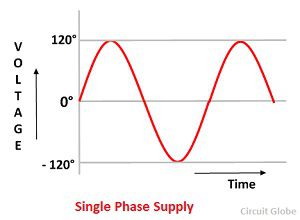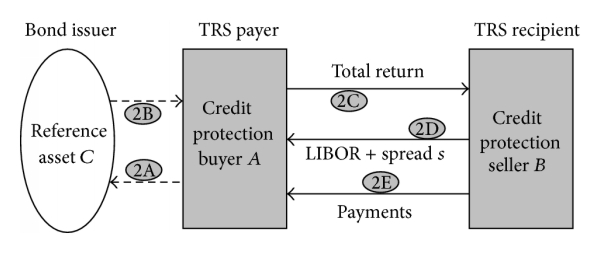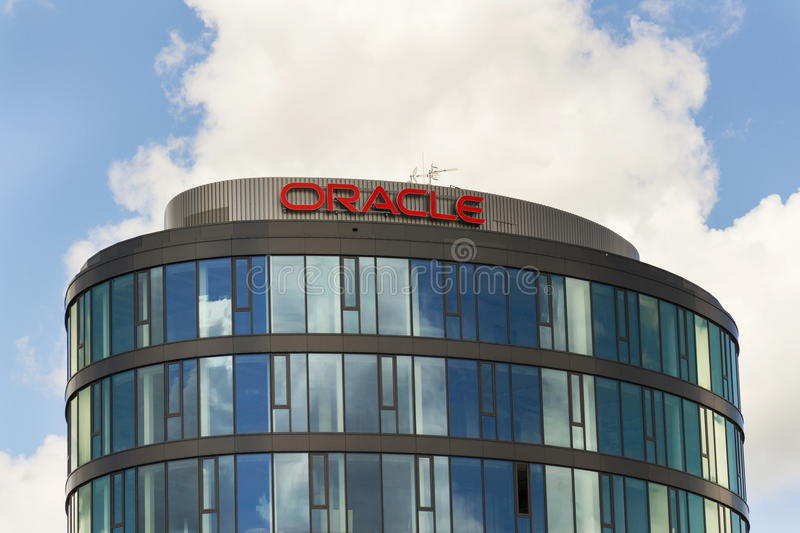What is a Value Added Network? VANs for Online…

By 1984, there will be more than 100 active MUDs and variants around the world. In many ways, a VAN acts as a service provider, simplifying much of the setup for organizations looking to initiate EDI. Due to the fact that many organizations first starting out with EDI often do so to meet a customer or partner requirement and therefore lack in-house EDI expertise, a VAN can be a valuable asset. As of 2002, Walmart has pushed AS2 for EDI.[6] Because of its significant presence in the global supply chain, AS2 has become a commonly adopted approach for EDI. Access and download collection of free Templates to help power your productivity and performance.

As stated before, VANs are standalone networks, which means a company would need to hire specialized individuals to build the network, as well as pay for the infrastructure. On the other hand, internet-based systems come with most of the infrastructure already in place and need only the software work to be done. This exciting new book focuses on the basic techniques that underlie computers, operating systems and networks.
Telex messaging network comes on line
In 1977 Cerf and Kahn will link the three networks and prove the efficacy of their TCP/IP protocol in a dramatic round-the-world transmission from a moving vehicle, the SRI Packet Radio Research van. Besides networking SAGE also helps pioneer interactive computing and multi-user systems. Hundreds of people use the system simultaneously, interacting through groundbreaking graphical consoles. Each console has its own large screen, pointing device (a light gun), a telephone, and an ashtray. Ever on the alert for a Soviet attack, SAGE operators would describe the experience as endless hours of boredom…broken by seconds of sheer terror.
- Connecting them to remote servers can be a nightmare of endless settings and false starts, accompanied by the squawks and squeals of an expensive, finicky modem.
- It is important to select the correct level of integration to match the business requirement.
- The FCC supports Carter, freeing U.S. telephone lines for many uses—including later answering machines, faxes and modems.
- With the proliferation of online commerce, businesses are presented with cost-effective supply chain management options.
By decade’s end many systems are up or being planned in Europe and North America. The paper used by some of the first ATMs is slightly radioactive, to be machine readable. The 1970s will also see rapid growth in behind-the-scenes financial transaction networks, like SWIFT for wire transfers. Side-band electromagnetic radiation emissions are present in (and with the proper equipment, can be captured from) keyboards, computer displays, printers, and other electronic devices. On the other hand, implementing EDI software can be a challenging process, depending on the complexity of the use case, technologies involved and availability of EDI expertise.
While wired networking offers greater speed, security and reliability, wireless networks offers more flexibility, scalability and mobility. What was revolutionary at the time was that this whole process took a half-second for the bit’s round trip and that the network was reliable and didn’t lose any information. By comparison, the Arpanet at that time could transmit information one way in 100 milliseconds. Browser War I had been more of a coup – when half the Mosaic team defected in early 1994 and formed Netscape under entrepreneur Jim Clark, Mosaic lasted less than a year. But when Microsoft licenses a version of Mosaic and rebrands it Internet Explorer, the fight is on. In the mid to late 1990s Netscape revolutionizes the business model for the Web, and helps it spread to ordinary people as well as businesses.
Value-Added Network (VAN)
A value-added network simplifies the communications process by reducing the number of parties with which a company needs to communicate. The VAN accomplishes this by acting as an intermediary between business partners that share standards-based or proprietary data. VANs are set up with audit capabilities so that the data being exchanged is formatted correctly and validated before it is transferred to the next party. VANs are sometimes referred to as added-value networks or turnkey communications lines.
Bush publicizes the Memex concept in 1945 articles in The Atlantic Monthly and Life. Value-added networks are generally used by large companies for efficient supply chain management with their suppliers, or by industry consortiums or telecommunications companies. VANs usually operate in a mailbox setting, wherein a company sends a transaction to a VAN, and the VAN places it in the receiver’s mailbox. The receiver contacts the VAN and picks up the transaction, and then sends a transaction of its own.
Google’s IPO and the New, Slow Boom
By the early 1960s, intercontinental ballistic missiles (ICBMs) will make the bomber threat – and SAGE itself – partly obsolete. The EDI standard prescribes mandatory and optional information for a particular document and gives the rules for the structure of the document. Just as two kitchens can be built “to code” but look completely different, two EDI documents can follow the same standard and contain different sets of information. For example, a food company may indicate a product’s expiration date while a clothing manufacturer would choose to send colour and size information. In the 1970s, private organizations managing large network services competed with state government-controlled telecommunications services. To differentiate from state services, private organizations recognized a driving need to add communication value.
KATV Coach of the Year 2023 – KATV
KATV Coach of the Year 2023.
Posted: Mon, 07 Aug 2023 20:45:07 GMT [source]
It can be either a network switch, hub or router, but requires more cable, unlike the bus topology. The head of the project for SRI, Donald Nielson, said it wasn’t apparent in the late 1970s that riding around in the van was an event of any particular significance. Put in perspective of SRI’s research over the past few decades, “this was not necessarily high on our list of accomplishments,” said Nielson, now retired from SRI. Rather, it was “just another demonstration” of the technology they were working on, which they knew was important. E-mail had already been introduced in 1971, and by 1977, it was clear to all involved that the idea of digital networking would be a part of their future. IBM’s System Network Architecture (SNA) dominates the world of corporate computing, and will carry the majority of the world’s networking traffic up through the late 1980s.
The First Mass “Web”: Minitel Goes Public
This proved complicated and led to the concept of user-defined networks, which preceded Internet service providers (ISPs). A Value-Added Network (VAN) is a hosted service used for sharing received, stored and forwarded messages. A VAN may also add audit data and modify data for automatic error what is van in computer detection, correction or conversion between communication protocols. Moreover, upgrading is also difficult due to the unique nature of the networks. In comparison, internet-based technologies are much easier to maintain without requiring a very high degree of technical sophistication.

The dark horse contender is ARPA’s Internet Protocols (TCP/IP), defined only by a self-governing community of those who have access to this closed network, mostly U.S. military and computer science researchers. France’s CYCLADES and Britain’s NPL network are experimenting with internetworking by 1973 with the European Informatics Network (EIN). Xerox PARC begins linking Ethernets with other networks using its PUP (PARC Universal Packet) protocol the same year. Both these efforts will influence the development of ARPA’s TCP/IP internetworking protocol, first sketched out in 1973 by Vint Cerf and Bob Kahn. ARPA has a practical need to link its original ARPAnet with its newer networks like the Packet Radio Network (PRNET) and Satellite Network (SATNET).
Value-Added Network
For an “outbound” document, the process for integrated EDI is to export a file (or read a database) from a company’s information systems and transform the file to the appropriate format for the translator. Like many pre-Internet technologies, VANs have had to reinvent themselves to remain relevant going forward. Today, VANs offer services that go above and beyond mailboxes for EDI exchange and retrieval, authentication of messages, and archival of past transactions.

In the case of a retailer sending a Purchase Order to a supplier, if the Purchase Order is “lost” anywhere in the business process, the effect is devastating to both businesses. To the supplier, they do not fulfil the order as they have not received it thereby losing business and damaging the business relationship with their retail client. For the retailer, they have a stock outage and the effect is lost sales, reduced customer service and ultimately lower profits.
Online ads mark the slow start of the commercial Web
At it’s peak around 1990, IBM’s SNA will quietly carry most of the world’s networking traffic. But different kinds of networks couldn’t link to each other, limiting the size of online communities. So, the next challenge has been creating “networks of networks,” a process called internetworking or internetting. In the early 1970s email makes the jump from timesharing systems – each with perhaps a couple of hundred users – to the newly burgeoning computer networks. Suddenly, messages are free to travel anywhere the network goes, and email explodes. Ray Tomlinson of Bolt, Beranek and Newman chooses the now-iconic “@” sign for his networked email protocol on the ARPAnet and by 1973, well over 50% of traffic on that research-oriented network is email.
- When it comes to sharing standard based or proprietary data, VANs make it easier for online businesses to share by becoming the one point of contact for them.
- Hundreds of people use the system simultaneously, interacting through groundbreaking graphical consoles.
- By 1993, the gopher developers are planning to add hyperlinks and even virtual reality features.
- In 1994, Enterprise Integration Technologies (EIT) founds the CommerceNet consortium to encourage Web commerce, and demonstrates secure credit-card transactions that same year.
- In comparison, internet-based technologies are much easier to maintain without requiring a very high degree of technical sophistication.
On July 12, 2005, an IETF working group ratified RFC4130 for MIME-based HTTP EDIINT (a.k.a. AS2) transfers, and the IETF has prepared a similar RFC for FTP transfers (a.k.a. AS3). EDI via web services (a.k.a. AS4) has also been standardized by the OASIS standards body. While some EDI transmission has moved to these newer protocols, the providers of value-added networks remain active. The standards prescribe the formats, character sets, and data elements used in the exchange of business documents and forms. The complete X12 Document List includes all major business documents, including purchase orders and invoices.